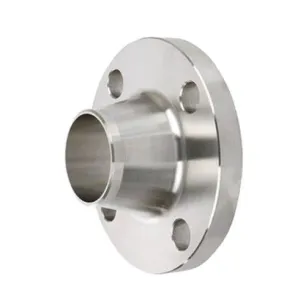-
Cangzhou Yulong Steel Co., Ltd.
-
Phone:
+86 13303177267 -
Email:
admin@ylsteelfittings.com
- English
- Arabic
- Italian
- Spanish
- Portuguese
- German
- kazakh
- Persian
- Greek
- French
- Russian
- Polish
- Thai
- Indonesian
- Vietnamese
- Zulu
- Korean
- Uzbek
- Hindi
- Serbian
- Malay
- Ukrainian
- Gujarati
- Haitian Creole
- hausa
- hawaiian
- Hebrew
- Miao
- Hungarian
- Icelandic
- igbo
- irish
- Japanese
- Javanese
- Kannada
- Khmer
- Rwandese
- Afrikaans
- Albanian
- Amharic
- Armenian
- Azerbaijani
- Basque
- Belarusian
- Bengali
- Bosnian
- Bulgarian
- Catalan
- Cebuano
- China
- China (Taiwan)
- Corsican
- Croatian
- Czech
- Danish
- Esperanto
- Estonian
- Finnish
- Frisian
- Galician
- Georgian
- Kurdish
- Kyrgyz
- Lao
- Latin
- Latvian
- Lithuanian
- Luxembourgish
- Macedonian
- Malgashi
- Malayalam
- Maltese
- Maori
- Marathi
- Mongolian
- Myanmar
- Nepali
- Norwegian
- Norwegian
- Occitan
- Pashto
- Dutch
- Punjabi
- Romanian
- Samoan
- Scottish Gaelic
- Sesotho
- Shona
- Sindhi
- Sinhala
- Slovak
- Slovenian
- Somali
- Sundanese
- Swahili
- Swedish
- Tagalog
- Tajik
- Tamil
- Tatar
- Telugu
- Turkish
- Turkmen
- Urdu
- Uighur
- Welsh
- Bantu
- Yiddish
- Yoruba

Nov . 30, 2024 04:18 Back to list
Understanding Bending Percentages in Stainless Steel Tubing Applications and Techniques
Understanding Bending SS Tubing Applications and Techniques
Stainless steel (SS) tubing is a vital material in numerous industries due to its excellent properties such as corrosion resistance, strength, and durability. Among its various applications, bending stainless steel tubing plays a significant role in the manufacturing of components for automotive, aerospace, medical, and construction sectors. This article aims to explore the importance of bending SS tubing, the techniques used, and the factors to consider for achieving optimal results.
The Importance of Bending SS Tubing
Bending stainless steel tubing is crucial for creating components that fit specific designs and space constraints. In applications such as exhaust systems, fuel lines, and structural supports, accurately bent tubing can enhance efficiency, reliability, and performance. The aesthetic appeal of bent tubing also plays a key role, particularly in industries like automotive design, where visual presentation is paramount.
Moreover, bending allows for the integration of multiple functionalities into a single component, reducing the need for joints and fittings. This minimization of connections not only reduces potential failure points but also simplifies installation and maintenance processes. Therefore, mastering the bending of stainless steel tubing contributes to creating high-quality products that are both effective and visually appealing.
Techniques for Bending SS Tubing
The bending of stainless steel tubing can be accomplished using several techniques, each offering unique advantages depending on the specific requirements of the application. Common methods include
1. Mandrel Bending This technique involves inserting a mandrel, a tool that supports the interior of the tubing, during the bending process. Mandrel bending minimizes the risk of kinking and deformation, resulting in clean, precise bends. This method is particularly beneficial for applications requiring tight radii and high-pressure environments, making it popular in the aerospace and automotive industries.
2. Rotary Draw Bending This method utilizes a bending die and a follower block to create the desired angle of the bend. The rotary draw bending process is known for its accuracy and repeatability, making it ideal for producing complex geometries in stainless steel tubing. It is commonly used where high tolerances are necessary.
3. Compression Bending In compression bending, the tubing is forced against a stationary die to achieve the bend. While this technique can be more straightforward, it may not be suitable for all types of stainless steel tubing, especially those requiring tight radii or specific geometrical adjustments.
bending ss tubing

4. Electric Resistance Bending This method employs heat generated by electric resistance to soften the tubing before bending. It allows for greater flexibility and reduces the chance of cracking or breaking the material. This technique is gaining traction in industries where quick, high-volume bends are required.
Factors to Consider in Bending SS Tubing
To achieve optimal results when bending stainless steel tubing, several factors must be taken into account
- Material Thickness The thickness of the tubing affects its ability to bend without deforming. Thinner tubing generally bends easier but may not hold its shape under stress, while thicker tubing may require more force.
- Bend Radius The desired bend radius significantly influences the choice of bending technique. Tight bends may necessitate mandrel bending, while looser bends could be formed using rotary draw or compression bending.
- Springback Stainless steel has a tendency to spring back after bending, which can affect the accuracy of the final product. Understanding springback characteristics and applying certain allowances during the bending process are crucial for achieving precise angles.
- Tooling and Setup The choice of bending machines and tooling is critical to the process. Properly maintained and calibrated equipment ensures high-quality results and extends the lifespan of tools.
Conclusion
Bending stainless steel tubing is a specialized process that requires a comprehensive understanding of techniques, materials, and design requirements. As industries continue to evolve, the demand for precision-engineered components will enhance the relevance of this skill. By mastering the various bending techniques and considering crucial factors such as material properties and tooling, manufacturers can ensure the production of robust and aesthetically pleasing stainless steel components. This not only meets industry standards but also contributes to overall operational efficiency and product quality.
Latest news
-
ANSI 150P SS304 SO FLANGE
NewsFeb.14,2025
-
ASTM A333GR6 STEEL PIPE
NewsJan.20,2025
-
ANSI B16.5 WELDING NECK FLANGE
NewsJan.15,2026
-
ANSI B16.5 SLIP-ON FLANGE
NewsApr.19,2024
-
SABS 1123 FLANGE
NewsJan.15,2025
-
DIN86044 PLATE FLANGE
NewsApr.19,2024
-
DIN2527 BLIND FLANGE
NewsApr.12,2024
-
JIS B2311 Butt-Welding Fittings LR/SR 45°/90° /180°Seamless/Weld
NewsApr.23,2024











